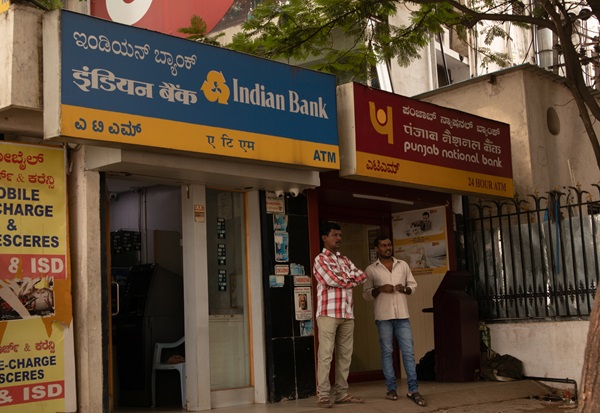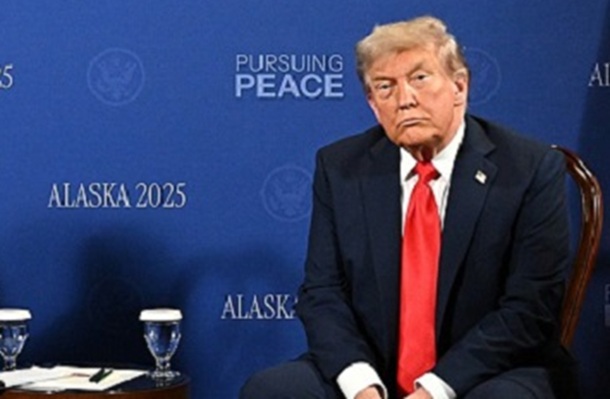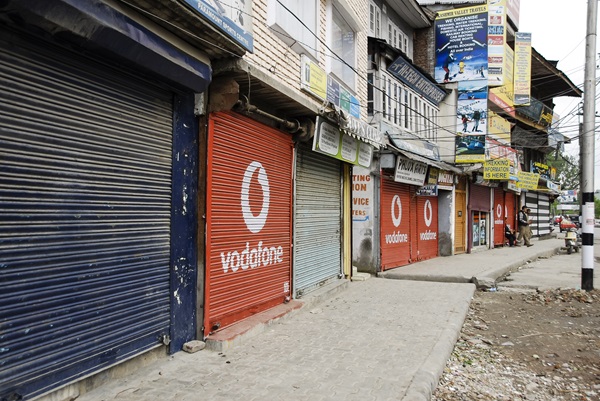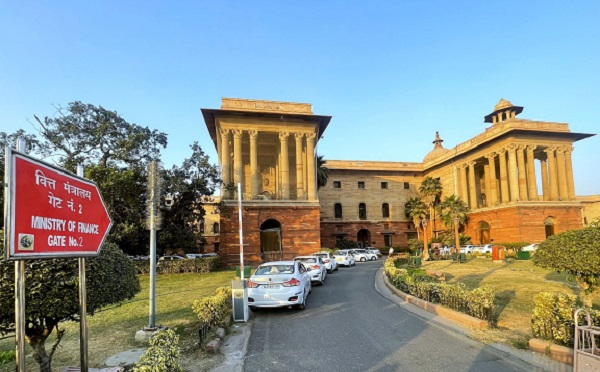.png)
Fed debate intensifies amid shutdown, as Cook signals balanced risks
Here’s your quick read to start the day: a chatty, no-fuss look at overnight moves, the big story, what’s on the docket, and the tickers you need to watch.

November 4, 2025 at 1:20 AM IST
GLOBAL MOOD: Cautiously Risk-on
Drivers: Tech Investment, US Fed Uncertainty
Asian markets opened mixed to cautious on Tuesday, as investors weighed renewed uncertainty over the US policy outlook, the ongoing federal government shutdown, and conflicting signals from Federal Reserve officials ahead of the December meeting. Risk sentiment remains fragile after Fed Governor Lisa Cook’s balanced comments suggested the next rate move is not guaranteed, reinforcing the message from Chair Powell that future easing will depend on evolving data which remains scarce due to the shutdown. In corporate news, OpenAI’s $38 billion cloud deal with Amazon boosted tech optimism globally, fuelling expectations for sustained investment in AI infrastructure.
TODAY’S WATCHLIST
- RBA Policy Decision
Meanwhile, early signs of progress emerged in Washington toward ending the 34-day government shutdown, with bipartisan talks hinting at a potential “off-ramp” to restore operations. The stalemate has frozen federal programs, furloughed thousands, and delayed vital economic data releases, leaving policymakers without key indicators.
Data Spotlight
US manufacturing activity contracted for the eighth straight month in October, underscoring continued weakness in the factory sector as tariffs and supply bottlenecks weighed on output. The Institute for Supply Management reported that its manufacturing PMI fell to 48.7 from 49.1 in September, remaining below the 50 mark that separates expansion from contraction. New orders remained subdued, and supplier delivery times lengthened as tariffs on imported goods disrupted supply chains. Despite the downturn, the PMI stayed above 42.3, a level the ISM associates with overall economic growth. Manufacturers cited persistent challenges, including labour shortages and tariff-related input delays, which have constrained production despite solid demand in select industries.
Takeaway:
WHAT HAPPENED OVERNIGHT
- US Stocks mixed; tech strength lifts Nasdaq while Dow lags on healthcare drag
-
- US stocks ended mixed on Monday as tech shares advanced, led by Amazon, which jumped after announcing a cloud-computing partnership with OpenAI.
- The Nasdaq posted the strongest gain, while the Dow slipped, weighed down by declines in UnitedHealth and Merck.
- A stronger dollar and mixed Fed commentary kept broader sentiment in check, as policymakers divided outlooks coincided with a data blackout from the prolonged US government shutdown.
- US stocks ended mixed on Monday as tech shares advanced, led by Amazon, which jumped after announcing a cloud-computing partnership with OpenAI.
- US Treasury yields hover near three-week highs amid limited data clarity
- The 10-year US Treasury yield eased slightly to 4.1% on Monday, holding close to a three-week peak as investors weighed the Fed’s next move in the absence of comprehensive economic data.
- The ISM Manufacturing PMI signalled a deeper contraction in October, with both employment and price components falling below expectations.
- The weaker data supported the stance of dovish Fed members, though policy divisions within the FOMC continue to shape market uncertainty about the path of interest rates.
- The 10-year US Treasury yield eased slightly to 4.1% on Monday, holding close to a three-week peak as investors weighed the Fed’s next move in the absence of comprehensive economic data.
- US Dollar climbs to three-month high as Fed cut bets cool
- The dollar index hovered near a three-month peak around 99.9 on Monday, extending last week’s gains amid growing doubts over another Fed rate cut this year.
- Softer ISM Manufacturing PMI data showed a deeper factory contraction and easing price pressures, but traders remained cautious following Chair Powell’s hawkish tone.
- The ongoing US government shutdown, now in its second month, continues to cloud the economic outlook.
- The dollar index hovered near a three-month peak around 99.9 on Monday, extending last week’s gains amid growing doubts over another Fed rate cut this year.
- Crude oil prices steady amid mixed supply and demand signals
- Brent crude prices were little changed on Monday as markets balanced OPEC+’s latest output hike with its plan to pause increases in Q1 2026.
- Concerns over a potential supply glut and weak factory activity across Asia limited upside momentum.
- Brent crude settled 0.2% higher at $64.89 per barrel, while WTI crude edged up 0.1% to $61.05 per barrel.
- Brent crude prices were little changed on Monday as markets balanced OPEC+’s latest output hike with its plan to pause increases in Q1 2026.
Day’s Ledger
Economic Data
- Japan S&P Global Manufacturing PMI
- US Balance of Trade
- India States Loan Auction
Corporate Actions
- Jul-Sep Earnings: State Bank of India, Mahindra and Mahindra, Adani Enterprises, One 97 Communications,
Easy Trip Planners to consider fund raising
Policy Events
- Reserve Bank of Australia Interest Rate Decision
- Fed Cook Speech
- ECB President Lagarde Speech
TICKERS TO WATCH
- BHARTI AIRTEL Q2 profit jumps 89% to ₹67.91 billion; ARPU improves to ₹256
- INDUSIND HOLDINGS finalises INVESCO AMC acquisition, becomes MF co-sponsor
- Supreme Court allows full reassessment of VODAFONE IDEA’s AGR dues till FY17
- ED confiscates ₹30 billion assets tied to Anil Ambani in laundering case
- ZEE SPORTS signs 3-year broadcast and digital rights deal with UPKL
- THOMAS COOK and SOTC resume China tours amid strong Indian travel demand
- VEDANTA targets FY26 growth through debt reduction, demerger, and capacity expansion
- DLF’s FY26 outlook hinges on aggressive new project launches
- TATA CONSUMER Q2 profit up 11% on solid tea and salt business in India
- INFOSYS unveils composable AI stack with integrated agents, services, and models
- CITY UNION BANK Q2 profit rises 15% to ₹3.29 billion
- KEC INTERNATIONAL extends $26.67 mln corporate guarantee for Saudi arm
- BHARTI AIRTEL to raise stake by up to 5% in Indus Towers
MUST READ
- RBI's dollar forward book deficit rises in September after seven months
- India, New Zealand begin fourth round of talks on free trade agreement
- Gold ETF AUM tops ₹1 trillion as strong inflow momentum sustains
- Microsoft signs nearly $9.7 billion contract with IREN for Nvidia chips
- India's BFSI sector grows 50-fold in 20 years, market cap hits ₹91 trillion
- Quick commerce players slash platform, delivery fees to attract customers
- Health, motor insurance policy sales jump on GST relief, festive cheer
- US Factory Activity Contracts at Faster Pacer as Production Lags
- Fed’s Goolsbee More Worried by Inflation Than Job Market
- Bailey Holds Key to Bank of England Decision as MPC Expected to Hold
See you tomorrow with another edition of The Morning Edge.
Have a great trading day.
Why the ‘One Nation One Ration Card’ Scheme Still Falls Short in Practice
Amit Batabyal writes, India’s One Nation One Ration Card was designed to make food entitlements truly portable, especially for the country’s vast migrant population. But new research shows that while awareness of the scheme is growing, trust in its reliability remains fragile.
Technical glitches, inconsistent stock, and frontline bottlenecks still block access for many. Strikingly, these gaps in implementation can shape not just food access—but migration decisions. When social protection feels uncertain, people rethink where they can safely move.



